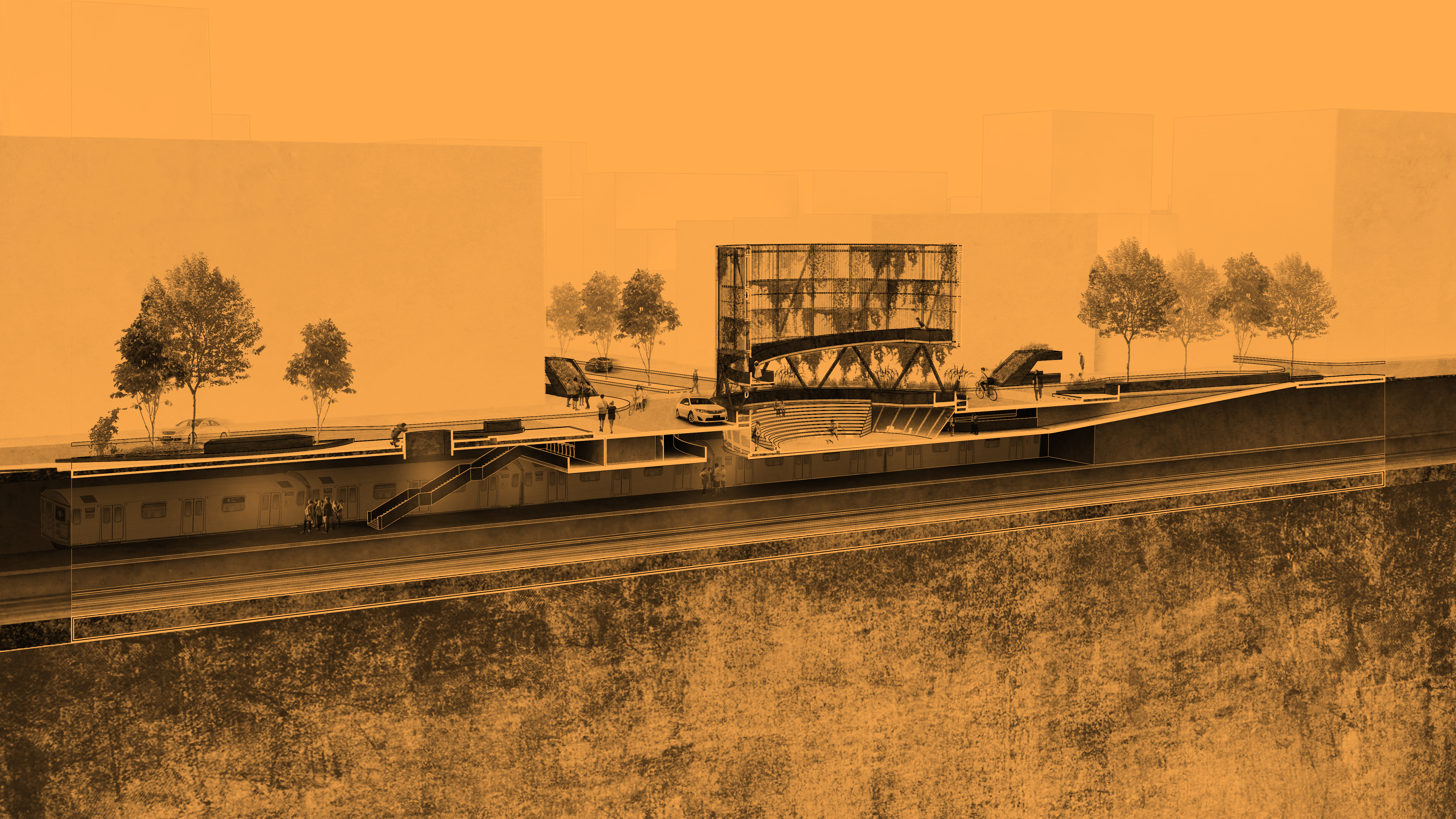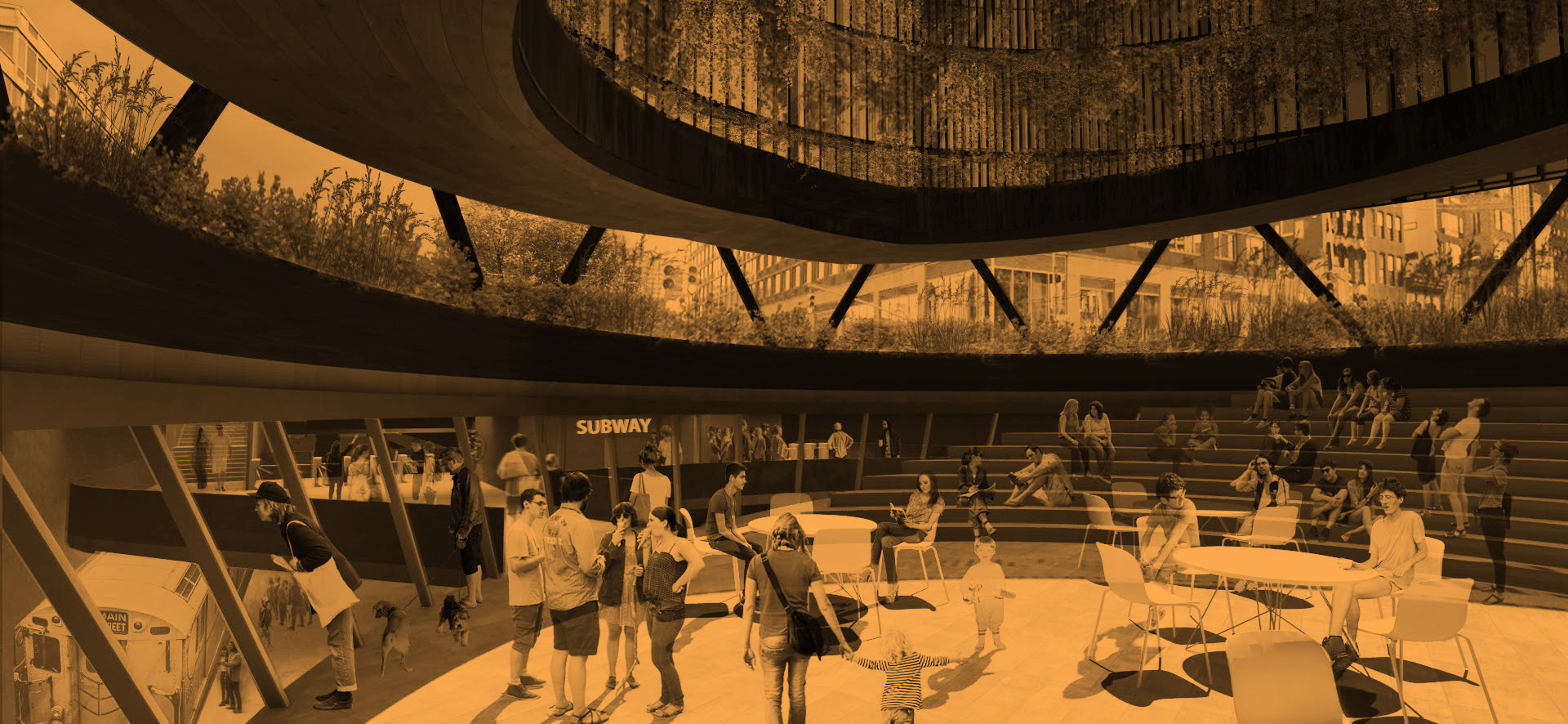
Let’s transform New York’s subway stations into public realm destinations that inspire civic pride.
By Jonathan Cohn and Shao Lun Lin
The public’s experience of the New York subway system is too often ugly, brutish, and not short enough. Proximity to great public spaces via the subway is the single most important factor for value in the city, but station environments within our degraded transit infrastructure can be alienating. The resulting lack of engagement means our subway stations are perceived merely as maintenance challenges, rather than as meaningful contributors to the public realm.
We propose an architectural response: transform transit entrances into destinations that enhance the social life of the city, inspiring a sense of ownership and civic responsibility. As a case study, we looked at the intersection of Bowery and East Houston Street in Lower Manhattan. This is one of the most dangerous locations in the city with high rates of serious traffic collisions. Moreover, the Second Avenue F station ranks among the lowest in the network for customer satisfaction.
We could transform the street-level intersection and the adjacent station into an interconnected series of public places. With three traffic lanes and one parking lane in each direction, there is underutilized space at street level. We envision an intersection that calms traffic while reclaiming areas for pedestrians that are currently dedicated to cars alone. Picture this: a new roundabout at the intersection’s center that manages traffic and reduces conflicts, curbs and medians enhanced with green space and widened to shorten crosswalk distances, and dedicated bike paths.
At the heart of this roundabout is a partially sunken plaza and amphitheater, the outer perimeter of which guides traffic and acts as a safe barrier between cars and pedestrians. This sunken plaza provides a sanctuary for transit users, members of the community, and tourists alike, and a venue for performances and impromptu gatherings. Connecting to the subway station, the plaza would dramatically improve the transit experience by making the station entrance into a social space.

In the architectural tradition of “social condenser” projects, we propose the overlay of intersecting programs through circulation, creating a venue that allows for different communities to meet. Public space needs to be well used in order for it to be appreciated and therefore maintained. By actively engaging and participating in public space, the public ensures its upkeep and maintenance. In completely reimagining this space, we hope to position the subway station as a point of respite and a great place to gather—a space that truly enhances the social life of the city.
–